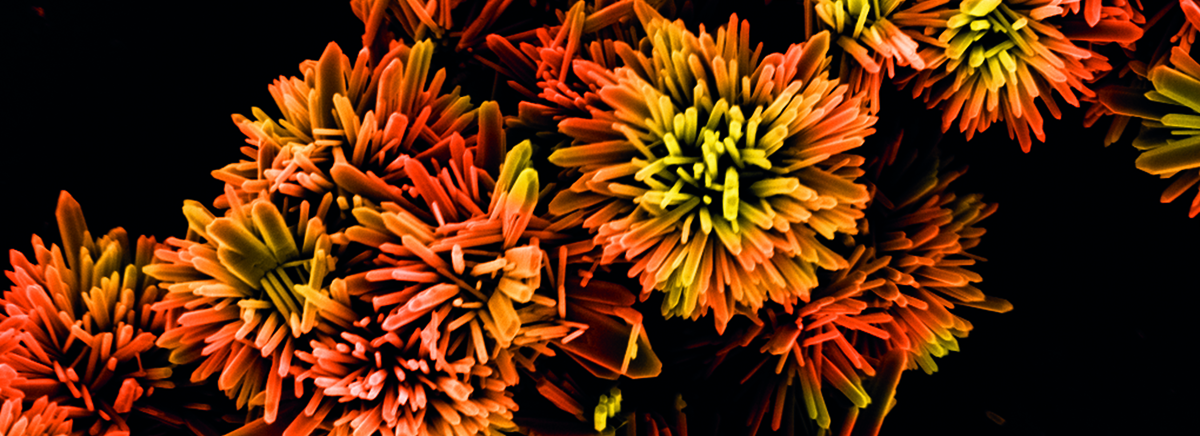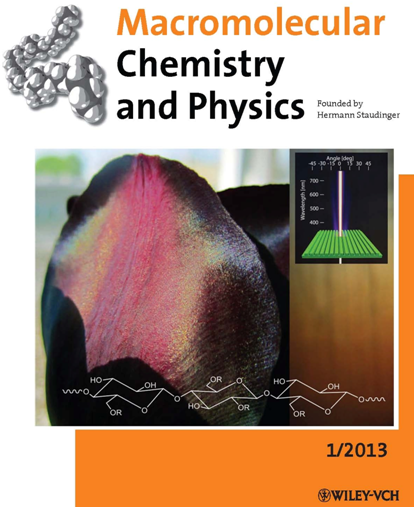
Structural Color and Iridescence in Transparent Sheared Cellulosic Films

01.01.2013
Structural Color and Iridescence in Transparent Sheared Cellulosic Films. Cellulose gratings are responsible for iridescence: shear, transparent, free-standing cellulosic films prepared from liquid-crystalline solutions can develop iridescence arising from the modulation of the film surface, similar to that found in the petals of the “Queen of the Night” tulip variety.
Last week the authors Susete N. Fernandes, Yong Geng, Silvia Vignolini, Beverly J. Glover, Ana C. Trindade, João P. Canejo, Pedro L. Almeida, Pedro Brogueira, and Maria H. Godinho , from the group Polymeric and Mesomorphic Materials, published the article Structural Color and Iridescence in Transparent Sheared Cellulosic Films in the journal Macromolecular Chemistry and Physics, which was further highlighted by the front cover.

Shear transparent cellulose free-standing thin films can develop iridescence similar to that found in petals of the tulip “Queen of the Night.” The iridescence of the film arises from the modulation of the surface into bands periodically spread perpendicular to the shear direction. Small amounts of nanocrystalline cellulose (NCC) rods in the precursor liquid-crystalline solutions do not disturb the optical properties of the solutions but enhance the mechanical characteristics of the films and affects their iridescence. Smaller bands periodicity, not affected by the NCC rods, slightly deviated from the shear direction is also observed. NCCs are crucial to tune and understand the film's surface features formation. Our findings could lead to new materials for application in soft reflective screens and devices.
Article: Macromolecular Chemistry and Physics, 214 (1), 25, 2013
http://onlinelibrary.wiley.com/doi/10.1002/macp.201200351/abstract








